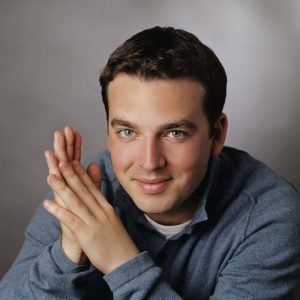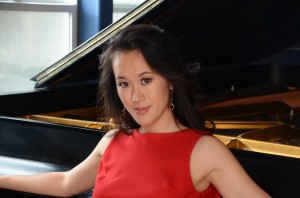Gallic Wit and German Substance from the Symphony
On a March weekend indulging in St. Patrick’s Day parades and revels, the San Diego Symphony chose the Gallic over the Gaelic, featuring Francis Poulenc’s Concerto for Two Pianos in D Minor, with Music Director Jahja Ling and his concert pianist wife Jessie Chang as soloists. James Gaffigan was the guest conductor.
While most singers respond effusively to the music of this early 20th-century French composer—his ample catalogue of song cycles and choral works touches the heart and lifts the spirit—symphonic players and their audiences have a more modest appreciation of this composer’s gifts, in part because he wrote so little orchestral music.
The Concerto for Two Pianos (1932) is arguably his most popular and congenial orchestral piece, bubbling with the Parisian wit and insouciance that George Gershwin portrayed with his outsider’s eye in “An American in Paris.” Poulenc’s Paris, however, is not the city of traffic-clogged streets, but one of bouncy tunes wafting from its dance halls and the exotic music of the colonial Orient.
What a pleasure to enjoy in Friday’s (March 15) concert Chang’s
gracious, articulate account of Poulenc’s silvery arpeggios and splashy figuration. Simultaneously sophisticated and playful, she unleashed the concerto’s vibrant heart at every turn and caressed winning cantabile themes in the work’s more reflective moments. In his supporting secondo role, Ling proved alert and dependable, crafting a few pearly melodies of his own in the quiet middle movement. Gaffigan appeared to relish the opening movement’s boisterous drive, and he elicited a crisp, fluent response from the orchestra throughout the concerto.
The positive ions floating in the Copley Hall atmosphere after the Poulenc Concerto may have contributed to Gaffigan’s unusually amiable take on Robert Schumann’s Fourth Symphony in D Minor.
The conductor’s strength came to the fore cultivating the drama of the opening movement and finding nobility in the percussive motifs of the third movement, but his transitions in the slow Romanze seemed murky.
On the podium Gaffigan is no shrinking violet: his combination of busy footwork and extravagant arm gestures ensured a vigorous response from the players, but I think this approach sacrificed ensemble precision, especially in the densely orchestrated Schumann Symphony.
Gaffigan opened with J. S. Bach’s Fourth Overture (or Orchestral Suite) in D Major, BWV 1069, a tour de force for the orchestra’s[php snippet=1] trumpets and oboes, who produced beautifully focused sonorities and shaped their lines with utmost stylistic sensitivity. Cutting down the strings to a mere 20 players made a just balance with the seven wind players, although the harpsichord was barely audible even at the edge of the Grand Tier.
While I applaud Gaffigan’s sense of balance in his Bach interpretation, I cannot understand why he was determined to coax that endless legato from the violins. He left the cellos and basses alone, and they thoughtfully delivered period appropriate short phrasing that cleanly defined Bach’s texture. But why give a Mendelssohnian gloss to the upper strings? Bach does not need to be made prettier for public consumption. He is fine on his own terms.
[box] The San Diego Symphony under James Gaffigan repeats this concert on March 16 at 8:00 p.m. and March 17 and 2:00 p.m. Tickets @ 619.235.0804 www.sandiegosymphony.com[/box]

Ken Herman, a classically trained pianist and organist, has covered music for the San Diego Union, the Los Angeles Times’ San Diego Edition, and for sandiego.com. He has won numerous awards, including first place for Live Performance and Opera Reviews in the 2017, the 2018, and the 2019 Excellence in Journalism Awards competition held by the San Diego Press Club. A Chicago native, he came to San Diego to pursue a graduate degree and stayed.Read more…





Your evaluation of everything is right on, but you are especially astute on the Bach. It sounded all wrong to me and I couldn’t figure out just why. In the mezzanine I had no trouble hearing the harpsichord (perhaps they moved it Sunday ?), but the performance resembled a painting in which all the colors are slightly smeared together. I think you have explained how this happened.